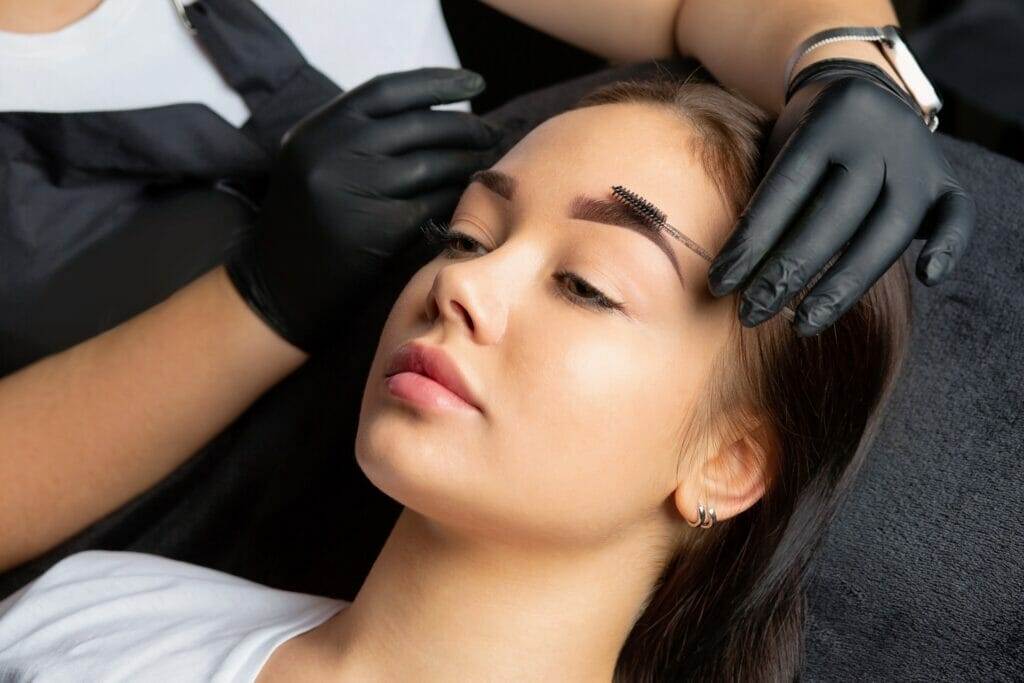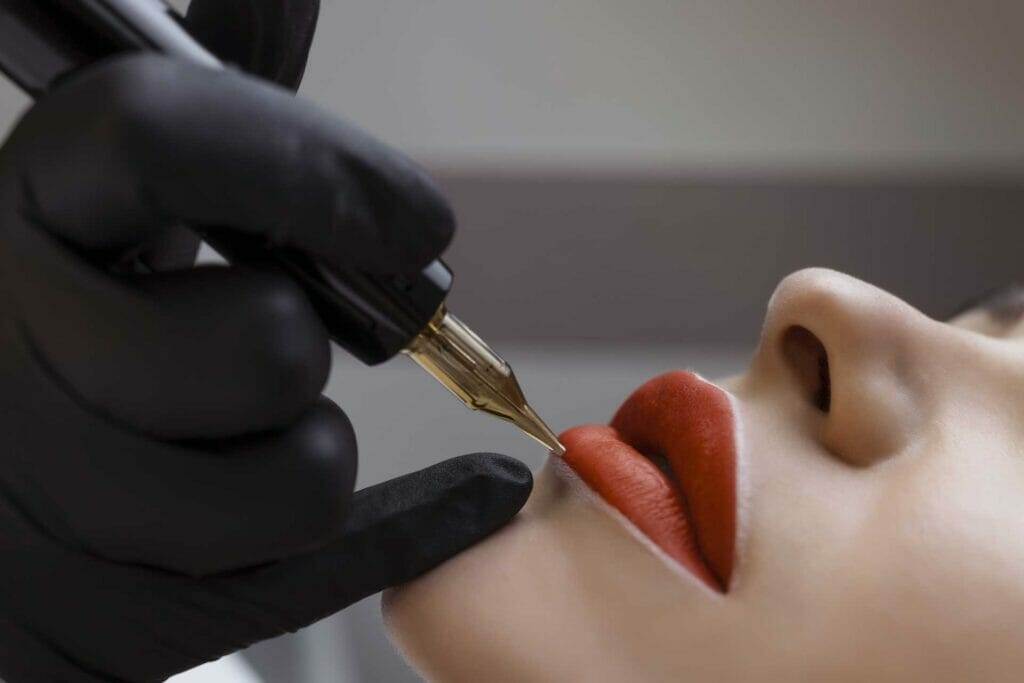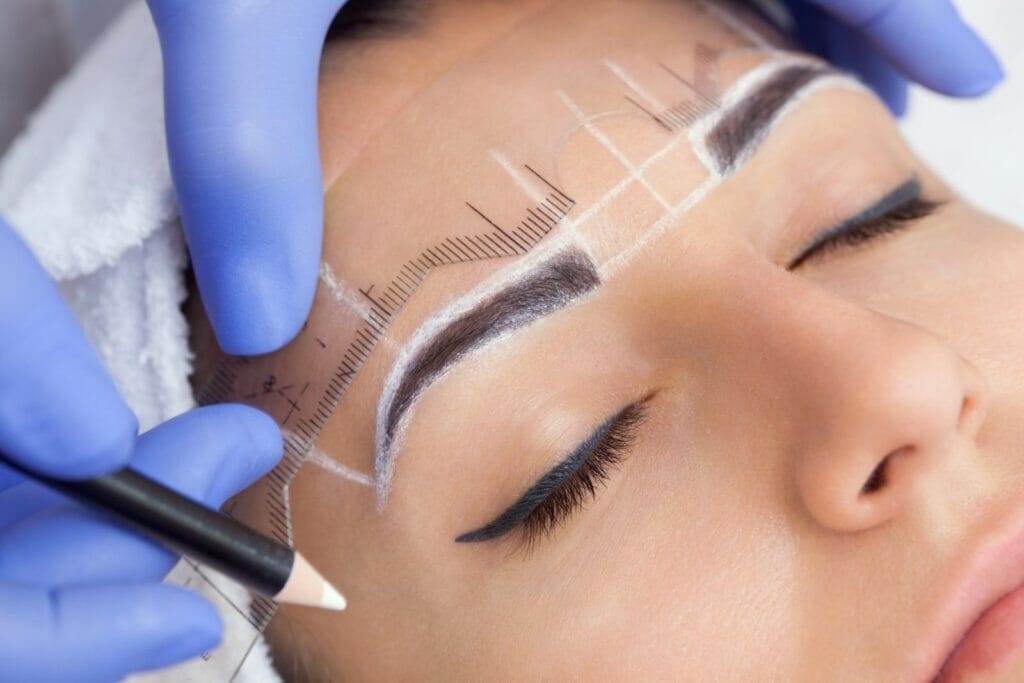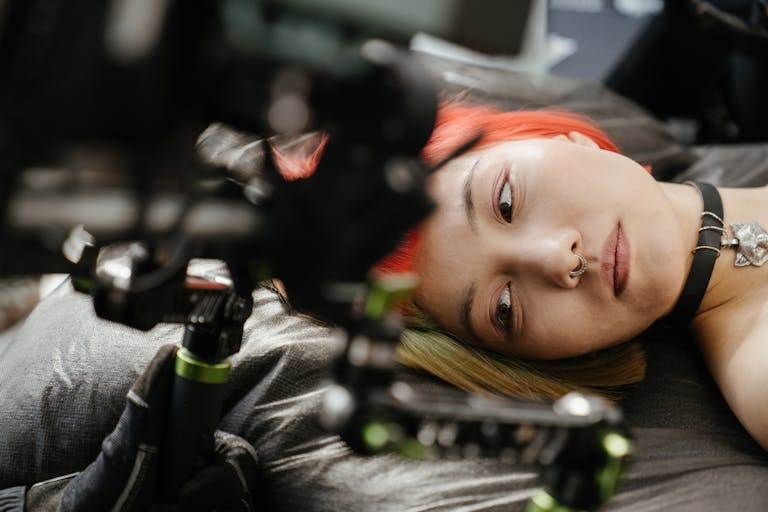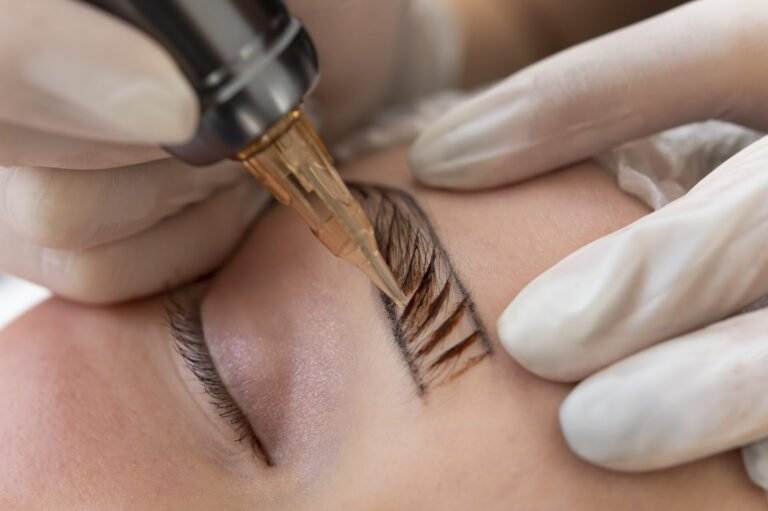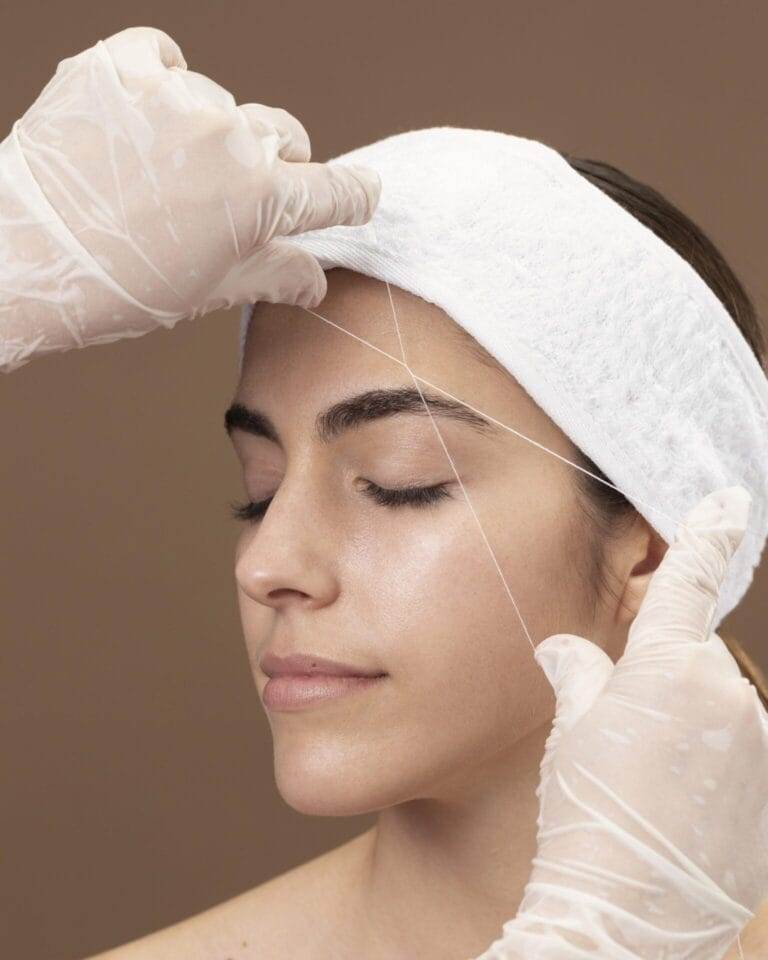Cosmetic tattooing, also known as permanent makeup or micropigmentation, is a procedure that involves the application of pigments to the skin to enhance or mimic the appearance of traditional makeup. It is a form of tattooing that is specifically designed for cosmetic purposes. The pigments are implanted into the dermal layer of the skin using a needle or a microblade, creating long-lasting results.
The history of cosmetic tattooing can be traced back thousands of years. Ancient civilizations such as the Egyptians and the Mayans used various techniques to enhance their features using pigments. In recent years, cosmetic tattooing has gained popularity and has become more advanced with the development of new techniques and technologies.
Understanding the basics of cosmetic tattooing is important for anyone considering this procedure. It is essential to have a clear understanding of what it entails, the benefits it offers, and the potential risks involved. By educating yourself about cosmetic tattooing, you can make an informed decision and ensure that you choose a reputable artist who will provide you with safe and satisfactory results.
The Benefits of Cosmetic Tattooing: A Look into the Advantages
One of the main benefits of cosmetic tattooing is that it saves time and effort. With permanent makeup, you no longer have to spend hours in front of the mirror applying and reapplying makeup. The pigments are applied once and can last for several years, allowing you to wake up with perfectly applied makeup every day.
Cosmetic tattooing also enhances natural features. It can define and shape eyebrows, create fuller-looking lips, and add definition to the eyes. By enhancing your natural features, cosmetic tattooing can help you achieve a more polished and put-together look without looking overly made-up.
In addition to enhancing physical appearance, cosmetic tattooing can also boost confidence and self-esteem. Many people feel more confident when they look their best, and permanent makeup can help achieve that. It can also be particularly beneficial for individuals with conditions such as alopecia or those who have undergone chemotherapy and have lost their eyebrows or eyelashes.
Another advantage of cosmetic tattooing is that it is ideal for people with allergies or sensitivities to traditional makeup. Some individuals may be allergic to certain ingredients found in cosmetics, making it difficult for them to wear makeup without experiencing adverse reactions. With cosmetic tattooing, there is no need to worry about allergic reactions as the pigments used are hypoallergenic and safe for the skin.
Lastly, cosmetic tattooing offers long-lasting results. While the pigments may fade over time, they can last anywhere from one to five years, depending on various factors such as the type of pigment used, the individual’s skin type, and their lifestyle. This means that you can enjoy the benefits of permanent makeup for an extended period without the need for frequent touch-ups.
The Different Types of Cosmetic Tattooing: From Brows to Lips
There are several different types of cosmetic tattooing, each designed to enhance a specific area of the face or body. Some of the most common types include eyebrow tattooing, eyeliner tattooing, lip tattooing, areola tattooing, and scar camouflage tattooing.
Eyebrow tattooing is one of the most popular forms of cosmetic tattooing. It involves creating hair-like strokes or shading to fill in sparse or thin eyebrows. This technique can help achieve a more defined and symmetrical brow shape and eliminate the need for daily eyebrow makeup application.
Eyeliner tattooing is another popular option. It involves applying pigments along the lash line to create the appearance of fuller and more defined eyes. This technique can save time and effort in daily makeup application and is particularly beneficial for individuals with shaky hands or poor eyesight.
Lip tattooing, also known as lip blush or lip tinting, involves adding color and definition to the lips. It can help enhance the natural shape of the lips, add volume, and create a more youthful appearance. Lip tattooing can also correct asymmetry and eliminate the need for daily lipstick application.
Areola tattooing is a specialized form of cosmetic tattooing that is often performed on individuals who have undergone breast reconstruction surgery. It involves creating the appearance of a nipple and areola complex using pigments. Areola tattooing can help restore a natural-looking breast appearance and boost self-confidence.
Scar camouflage tattooing is a technique used to conceal scars or skin imperfections. It involves matching the color of the surrounding skin and applying pigments to the scarred area to make it less noticeable. Scar camouflage tattooing can be particularly beneficial for individuals with scars from surgeries, accidents, or medical conditions.
The Process of Cosmetic Tattooing: What You Need to Know
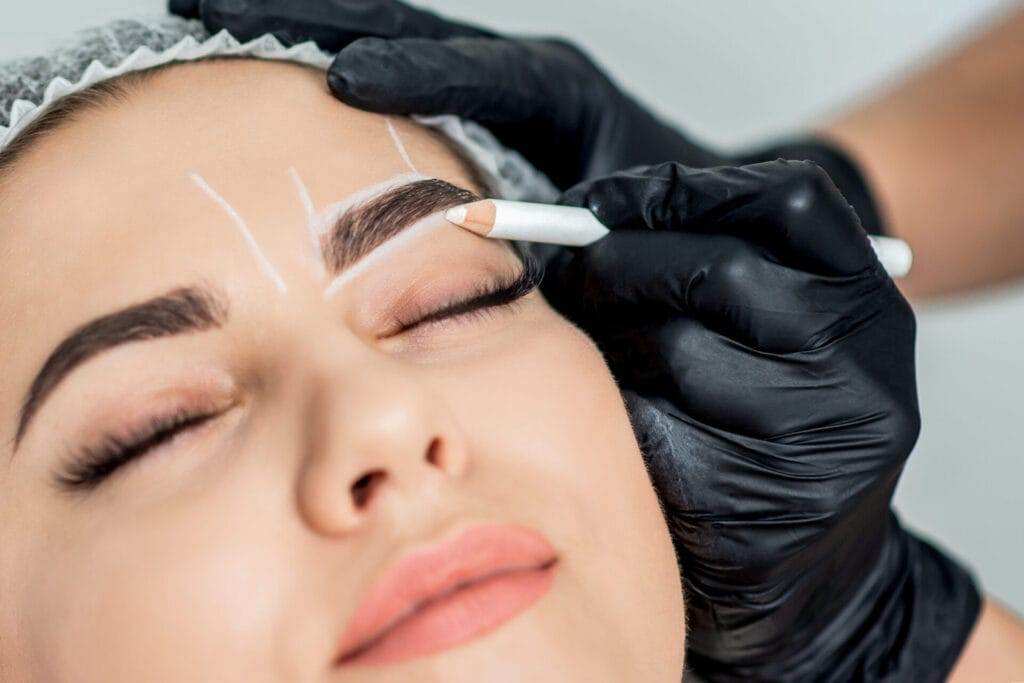
The process of cosmetic tattooing typically involves several steps, starting with a consultation and design phase. During the consultation, you will discuss your desired outcome, any concerns or questions you may have, and your expectations for the procedure. The artist will assess your skin type, coloration, and facial features to determine the best approach for your specific needs.
Once the design is finalized, the next step is numbing and preparation. A topical anesthetic will be applied to the area to minimize discomfort during the procedure. The artist will also clean and prepare the skin to ensure a sterile environment.
The tattooing process itself involves using a needle or microblade to implant pigments into the dermal layer of the skin. The artist will carefully follow the design and create precise strokes or shading to achieve the desired result. The process can take anywhere from one to three hours, depending on the complexity of the procedure.
Aftercare instructions are crucial for a successful healing process. The artist will provide you with specific guidelines on how to care for the tattooed area, including avoiding excessive moisture, sun exposure, and certain skincare products. It is important to follow these instructions to ensure proper healing and long-lasting results.
Preparing for Your Cosmetic Tattooing Appointment: Dos and Don’ts
Preparing for your cosmetic tattooing appointment is crucial to ensure a successful procedure. Here are some dos and don’ts to keep in mind:
1. Avoid alcohol and blood-thinning medications: Alcohol and blood-thinning medications can increase bleeding during the procedure, which can affect the absorption of pigments. It is best to avoid these substances for at least 24 hours before your appointment.
2. Stay hydrated and well-rested: Proper hydration and rest can help promote optimal healing. Make sure to drink plenty of water in the days leading up to your appointment and get a good night’s sleep.
3. Avoid sun exposure and tanning: Sun exposure and tanning can affect the color and longevity of the pigments. It is important to avoid direct sunlight and tanning beds for at least two weeks before your appointment.
4. Do not pluck or wax the area to be tattooed: It is important to have the hair in the area to be tattooed intact. Plucking or waxing can irritate the skin and make the procedure more uncomfortable.
By following these dos and don’ts, you can ensure that your skin is in the best possible condition for the cosmetic tattooing procedure.
Aftercare for Your Cosmetic Tattoo: Essential Tips for a Successful Healing Process
Proper aftercare is crucial for a successful healing process and long-lasting results. Here are some essential tips to follow:
1. Keep the area clean and dry: Avoid touching or rubbing the tattooed area unnecessarily. Keep it clean by gently washing it with a mild, fragrance-free cleanser and patting it dry with a clean towel.
2. Apply ointment as directed: The artist will provide you with an ointment to apply to the tattooed area. Follow their instructions on how often to apply it and how much to use. This will help keep the area moisturized and promote healing.
3. Avoid picking or scratching the area: Picking or scratching the tattooed area can cause scarring and affect the color and appearance of the pigments. It is important to resist the urge to touch or scratch the area, even if it feels itchy.
4. Avoid swimming or soaking in water: Water can cause pigments to fade or become dislodged, so it is important to avoid swimming pools, hot tubs, saunas, and other bodies of water until the area has fully healed.
By following these aftercare tips, you can ensure that your cosmetic tattoo heals properly and maintains its color and appearance for an extended period.
The Cost of Cosmetic Tattooing: Understanding the Investment
The cost of cosmetic tattooing can vary depending on several factors, including the type of procedure, the artist’s experience and reputation, and the location. It is important to understand that cosmetic tattooing is an investment in your appearance and should not be solely based on price.
Factors that can affect the cost include the complexity of the procedure, the amount of time required, and the quality of the pigments used. More advanced techniques such as microblading may be more expensive than traditional tattooing methods.
On average, eyebrow tattooing can cost anywhere from $300 to $800, eyeliner tattooing can range from $200 to $600, and lip tattooing can cost between $400 and $1,000. Areola tattooing and scar camouflage tattooing prices can vary depending on the individual’s specific needs.
It is important to invest in a reputable artist who has proper training, certifications, and licenses. Choosing a less expensive option may result in poor quality work or potential health risks. Remember that this is a semi-permanent procedure that will last for several years, so it is worth investing in a skilled and experienced artist.
Common Concerns About Cosmetic Tattooing: Addressing the Myths
There are several common concerns and myths surrounding cosmetic tattooing. Here are some of them:
1. Pain and discomfort: While cosmetic tattooing may cause some discomfort, most artists use topical anesthetics to minimize pain during the procedure. The level of discomfort varies depending on individual pain tolerance.
2. Fading and discoloration: Over time, pigments may fade or change color due to factors such as sun exposure, skincare products, and individual skin chemistry. However, with proper aftercare and regular touch-ups, the pigments can maintain their color and appearance for an extended period.
3. Safety and health risks: When performed by a trained and licensed professional, cosmetic tattooing is generally safe. However, there is a risk of infection if proper hygiene and sterilization protocols are not followed. It is important to choose a reputable artist who adheres to strict health and safety standards.
4. Permanent vs. semi-permanent: Cosmetic tattooing is often referred to as permanent makeup, but the pigments used are actually semi-permanent. They will fade over time and may require touch-ups every one to five years, depending on various factors.
It is important to address these concerns and myths with your chosen artist during the consultation phase. They can provide you with accurate information and alleviate any fears or misconceptions you may have.
The Future of Cosmetic Tattooing: Trends to Watch Out For
The field of cosmetic tattooing is constantly evolving, with new techniques and trends emerging. Here are some trends to watch out for in the future:
1. Microblading and other advanced techniques: Microblading has gained popularity in recent years due to its ability to create natural-looking hair-like strokes. This technique involves using a handheld tool with multiple tiny needles to create precise incisions in the skin.
2. More natural-looking results: As the industry continues to advance, there is a growing emphasis on achieving more natural-looking results. Artists are focusing on creating subtle enhancements that enhance the individual’s natural features rather than creating a heavily made-up look.
3. Increased popularity and acceptance: Cosmetic tattooing is becoming more mainstream and accepted as a legitimate form of enhancing one’s appearance. As more people become aware of the benefits and see the positive results, the popularity of cosmetic tattooing is expected to continue to grow.
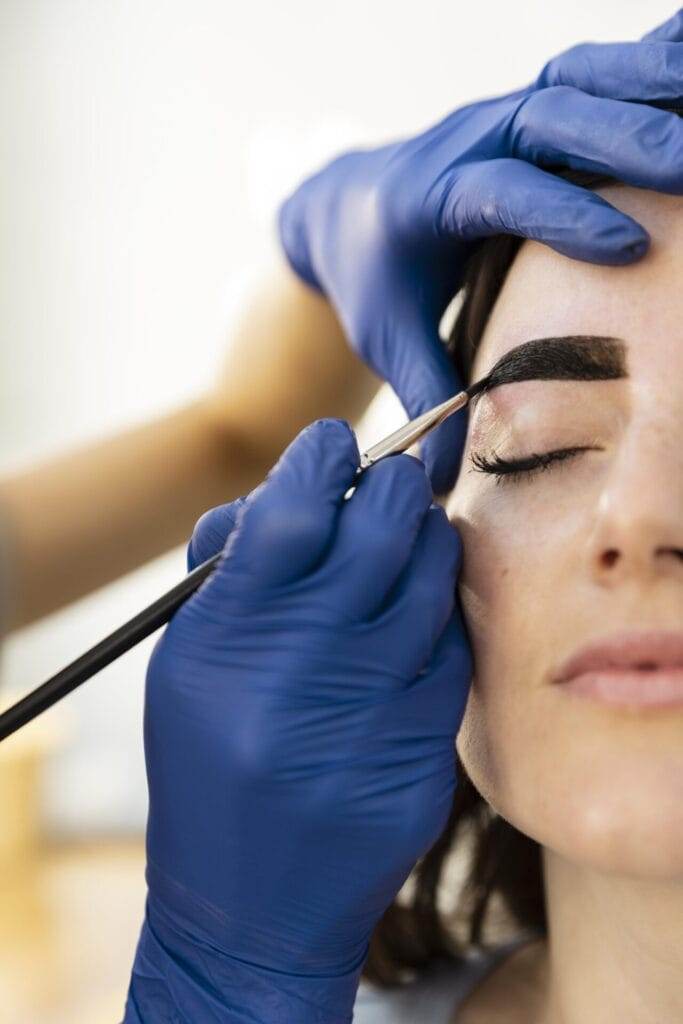
Embracing the Art of Cosmetic Tattooing
In conclusion, understanding the basics of cosmetic tattooing is essential for anyone considering this procedure. It is important to educate yourself about the benefits, types, process, and aftercare of cosmetic tattooing to make an informed decision and ensure a successful outcome.
Cosmetic tattooing offers numerous benefits, including saving time and effort, enhancing natural features, boosting confidence and self-esteem, and providing long-lasting results. There are different types of cosmetic tattooing available, each designed to enhance a specific area of the face or body.
Finding the right cosmetic tattoo artist is crucial for a successful outcome. It is important to research and read reviews, check for certifications and licenses, look at before and after photos, and schedule a consultation before committing to a specific artist.
Proper preparation and aftercare are essential for a successful healing process. By following the dos and don’ts and adhering to the aftercare instructions provided by your artist, you can ensure that your cosmetic tattoo heals properly and maintains its color and appearance for an extended period.
While the cost of cosmetic tattooing can vary, it is important to invest in a reputable artist who has proper training and experience. Choosing a skilled artist will ensure that you receive safe and satisfactory results.
Addressing common concerns and myths about cosmetic tattooing is important to alleviate any fears or misconceptions. By understanding the facts, you can make an informed decision about whether cosmetic tattooing is right for you.
The future of cosmetic tattooing looks promising, with advancements in techniques and trends that focus on achieving more natural-looking results. As the popularity and acceptance of cosmetic tattooing continue to grow, more people are embracing this art form as a way to enhance their features and save time on their daily beauty routines. Additionally, the development of new pigments and equipment has allowed for better color retention and improved precision during the tattooing process. This has resulted in longer-lasting and more realistic results, making cosmetic tattooing a viable option for those seeking semi-permanent makeup solutions. Furthermore, the industry is also witnessing a shift towards more personalized and customized approaches, with artists tailoring their techniques to suit individual clients’ needs and preferences. Overall, the future of cosmetic tattooing holds great potential for further innovation and refinement, ensuring that clients can achieve their desired aesthetic goals with confidence and convenience.

